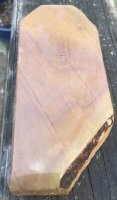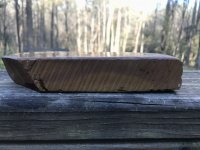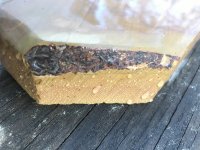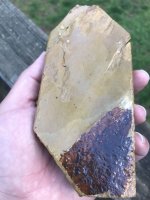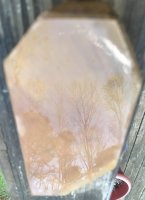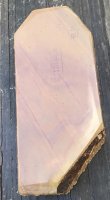Neat!
You are using an out of date browser. It may not display this or other websites correctly.
You should upgrade or use an alternative browser.
You should upgrade or use an alternative browser.
Show us your Japanese Natural Whetstones
- Thread starter superbleu
- Start date
I'll just leave these here for a while....


Steve56
Ask me about shaving naked!
Nice image Alex!
Cheers, Steve
Cheers, Steve
My Naguras look cook but not that cool. +100 on awesomeness. What's the plural of Nagura? Nagura, Naguras, Naguri, something totally different???I'll just leave these here for a while....
A little late... but Gamma tell us about the blue stripped nagura? Mejiro? I've seen lightly tinted blues, but that one is most definitely the bees knees....at least in the looks department.
Antique Hoosier
“Aircooled”
Some really stunning entries lately!
Someday, I'll get around to writing out the tale of the blue Mejiro. Or maybe I'll work it into a video clip or something. For now though - suffice to say, Mother Nature has a lovely sense of humor.
Steve56
Ask me about shaving naked!
Here's some eye candy for the Japanese knife folks and metal polishers. The two large stones and the triangular one between them are uchigumori hato, a softer uchigumori used to polish hard steel. The one at upper center is about 6" long for scale and is a little softer and less pure than the one on the left.
The other stones are Narutaki stones, a bit harder and used to polish soft steel. I often wondered if these really were from Narutaki, but two or three of them have the characteristic lipstick pink to red skin that according to Alex, was unique to Narutaki. The orangeish color seems strongly asscociated with a lot of what's sold as Narutaki stone, and the color is not easily mistaken once you see it though I don't know that it's unique.
This isn't as impressive of a pile as it might seem, sawing it for finger stones will waste 50% of the material, and you may lose another 15-25% thinning and shaping it. Thicker pieces of a small size can be used on bi-metal knife bevels or on honyaki (single piece of steel) after smoothing the edges and face.
I've tested the hato and have begun flattening and testing the Narutaki stones. All these stones are a range of hardness really so you just have to try them on steel and the same stone can easily produce different results on different knives, even from the same maker. So it's nice to have an assortment.
So what are the characteristics of good quality polishing stones?
They need to be very pure, even more than razor hones. As Alex noted in a previous post, one tiny particle can mean days of lost work bringing steel up through the grits.
The stone should not smear, streak, scratch or otherwise mark soft steel of clad blades. Marked up cladding kind of defeats the purpose of using these stones.
They should produce a pleasing appearance. Some just make steel look dull and some give you some pizazz. And a bonus of the best pieces on bi-metal blades is that they seem to enhance the line between soft and hard steel, kind of like what Photoshop does in the unsharp mask filter except the line is dark instead of light.
Lots of fun with the rock collection!
Cheers, Steve

The other stones are Narutaki stones, a bit harder and used to polish soft steel. I often wondered if these really were from Narutaki, but two or three of them have the characteristic lipstick pink to red skin that according to Alex, was unique to Narutaki. The orangeish color seems strongly asscociated with a lot of what's sold as Narutaki stone, and the color is not easily mistaken once you see it though I don't know that it's unique.
This isn't as impressive of a pile as it might seem, sawing it for finger stones will waste 50% of the material, and you may lose another 15-25% thinning and shaping it. Thicker pieces of a small size can be used on bi-metal knife bevels or on honyaki (single piece of steel) after smoothing the edges and face.
I've tested the hato and have begun flattening and testing the Narutaki stones. All these stones are a range of hardness really so you just have to try them on steel and the same stone can easily produce different results on different knives, even from the same maker. So it's nice to have an assortment.
So what are the characteristics of good quality polishing stones?
They need to be very pure, even more than razor hones. As Alex noted in a previous post, one tiny particle can mean days of lost work bringing steel up through the grits.
The stone should not smear, streak, scratch or otherwise mark soft steel of clad blades. Marked up cladding kind of defeats the purpose of using these stones.
They should produce a pleasing appearance. Some just make steel look dull and some give you some pizazz. And a bonus of the best pieces on bi-metal blades is that they seem to enhance the line between soft and hard steel, kind of like what Photoshop does in the unsharp mask filter except the line is dark instead of light.
Lots of fun with the rock collection!
Cheers, Steve
Oh come on. I've just recently got my first Coticule. A month later I got my first JNATs and Nagura. Now you guys are going to get me into something else. Unbelievable.Here's some eye candy for the Japanese knife folks and metal polishers. The two large stones and the triangular one between them are uchigumori hato, a softer uchigumori used to polish hard steel. The one at upper center is about 6" long for scale and is a little softer and less pure than the one on the left.
The other stones are Narutaki stones, a bit harder and used to polish soft steel. I often wondered if these really were from Narutaki, but two or three of them have the characteristic lipstick pink to red skin that according to Alex, was unique to Narutaki. The orangeish color seems strongly asscociated with a lot of what's sold as Narutaki stone, and the color is not easily mistaken once you see it though I don't know that it's unique.
This isn't as impressive of a pile as it might seem, sawing it for finger stones will waste 50% of the material, and you may lose another 15-25% thinning and shaping it. Thicker pieces of a small size can be used on bi-metal knife bevels or on honyaki (single piece of steel) after smoothing the edges and face.
I've tested the hato and have begun flattening and testing the Narutaki stones. All these stones are a range of hardness really so you just have to try them on steel and the same stone can easily produce different results on different knives, even from the same maker. So it's nice to have an assortment.
So what are the characteristics of good quality polishing stones?
They need to be very pure, even more than razor hones. As Alex noted in a previous post, one tiny particle can mean days of lost work bringing steel up through the grits.
The stone should not smear, streak, scratch or otherwise mark soft steel of clad blades. Marked up cladding kind of defeats the purpose of using these stones.
They should produce a pleasing appearance. Some just make steel look dull and some give you some pizazz. And a bonus of the best pieces on bi-metal blades is that they seem to enhance the line between soft and hard steel, kind of like what Photoshop does in the unsharp mask filter except the line is dark instead of light.
Lots of fun with the rock collection!
Cheers, Steve
View attachment 776157
Seriously though, awesome collection. Thanks for sharing.

Took a chance on a sight unseen jnat and it finally arrived from Japan today.
I have no idea what layer this is- does anyone have a guess?
Feels hard and fine but I don't have very much experience.
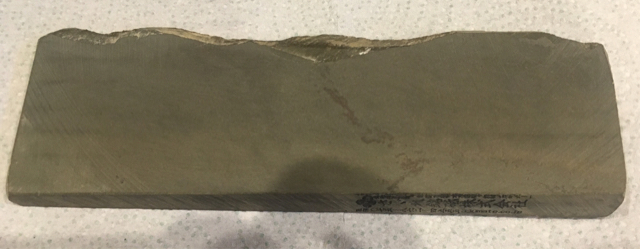
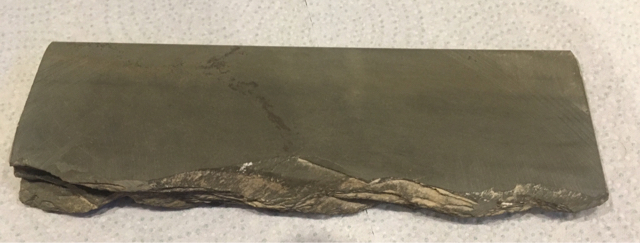
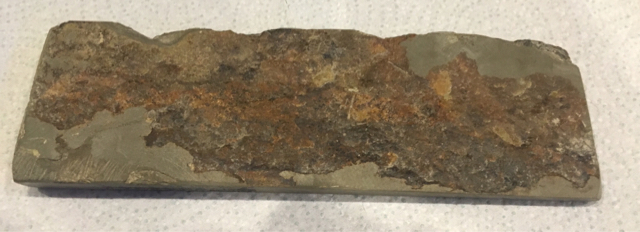
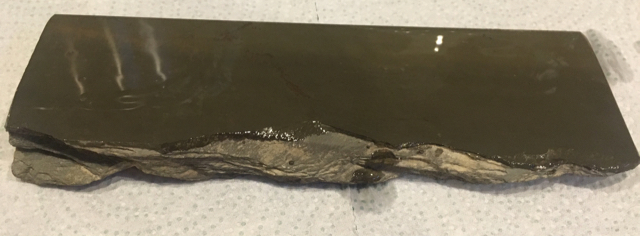
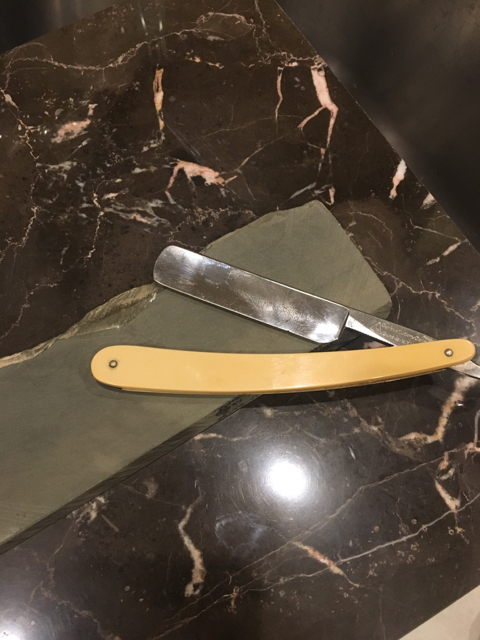
I have no idea what layer this is- does anyone have a guess?
Feels hard and fine but I don't have very much experience.





Well apparently the vendor of the stone has "mixed reviews" shall we say and the stones he sells are notorious. If nothing else I will experiment with it as a tomo.
Just had to drop this off here - the Renge is just, well - it's silly.... When I slurry with it, it looks like everything is bleeding..lol


Neat tomo. Is it fast?Just had to drop this off here - the Renge is just, well - it's silly.... When I slurry with it, it looks like everything is bleeding..lol

Neat tomo. Is it fast?
That's actually one of the finest examples of Uchi I've ever had - it's fast in a sense but it's a mild cutter. So - it's fast at what it does but it's not fast in the general sense of things. Very clean/pure stone though, which is the main thing. Speed, of the lack of, is whatever - but getting harsh oxides in the slurry is pretty awful.
These three beauties are enroute.
A fairly thick Karasu seam, very nice stone to work with.


Beautiful stones Gents !!
Similar threads
- Replies
- 35
- Views
- 2K

